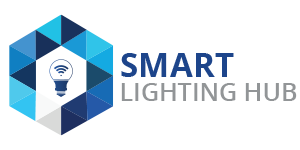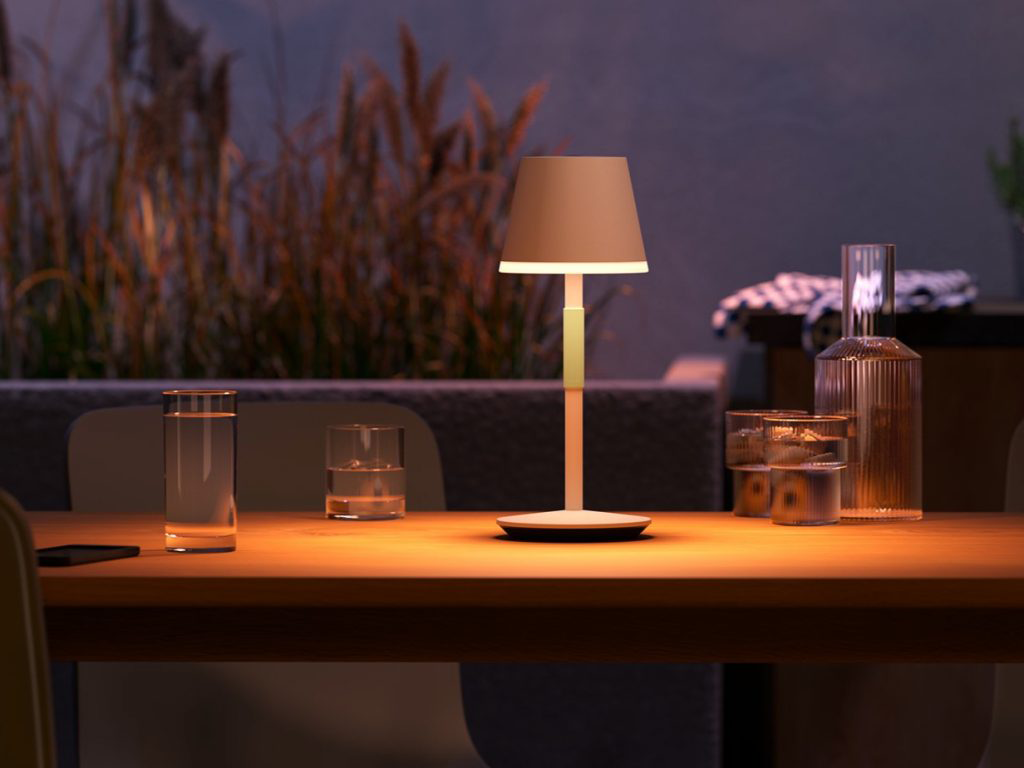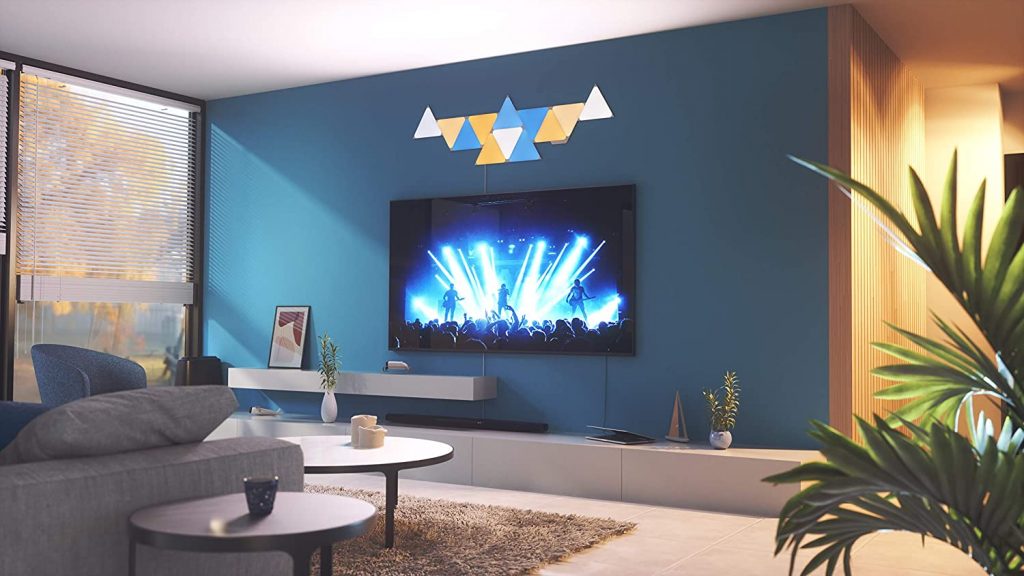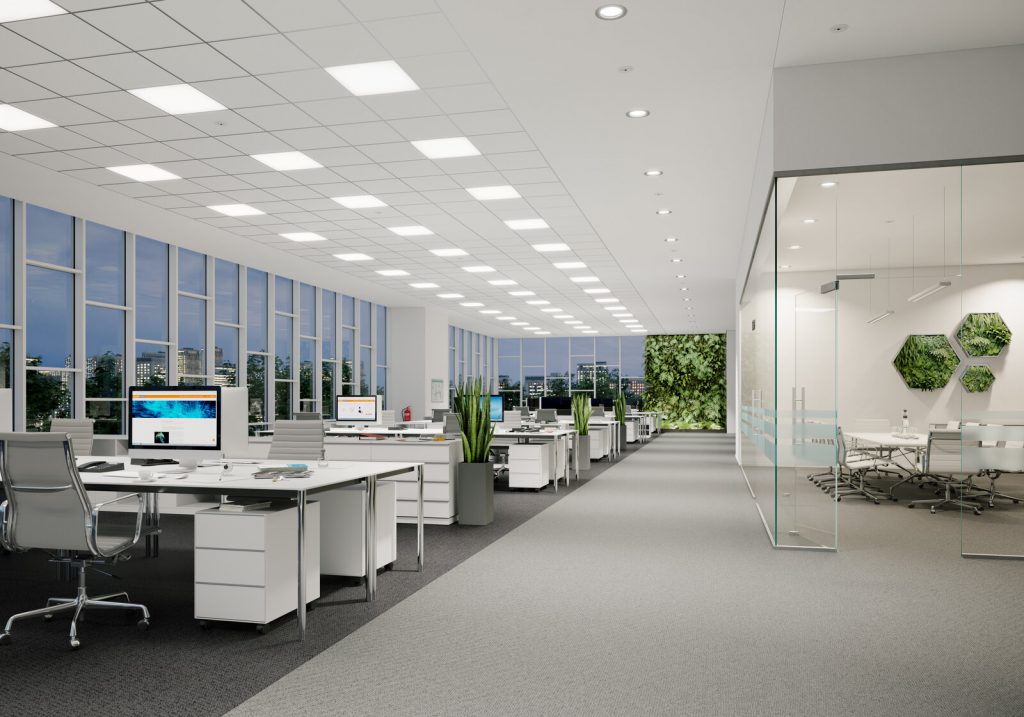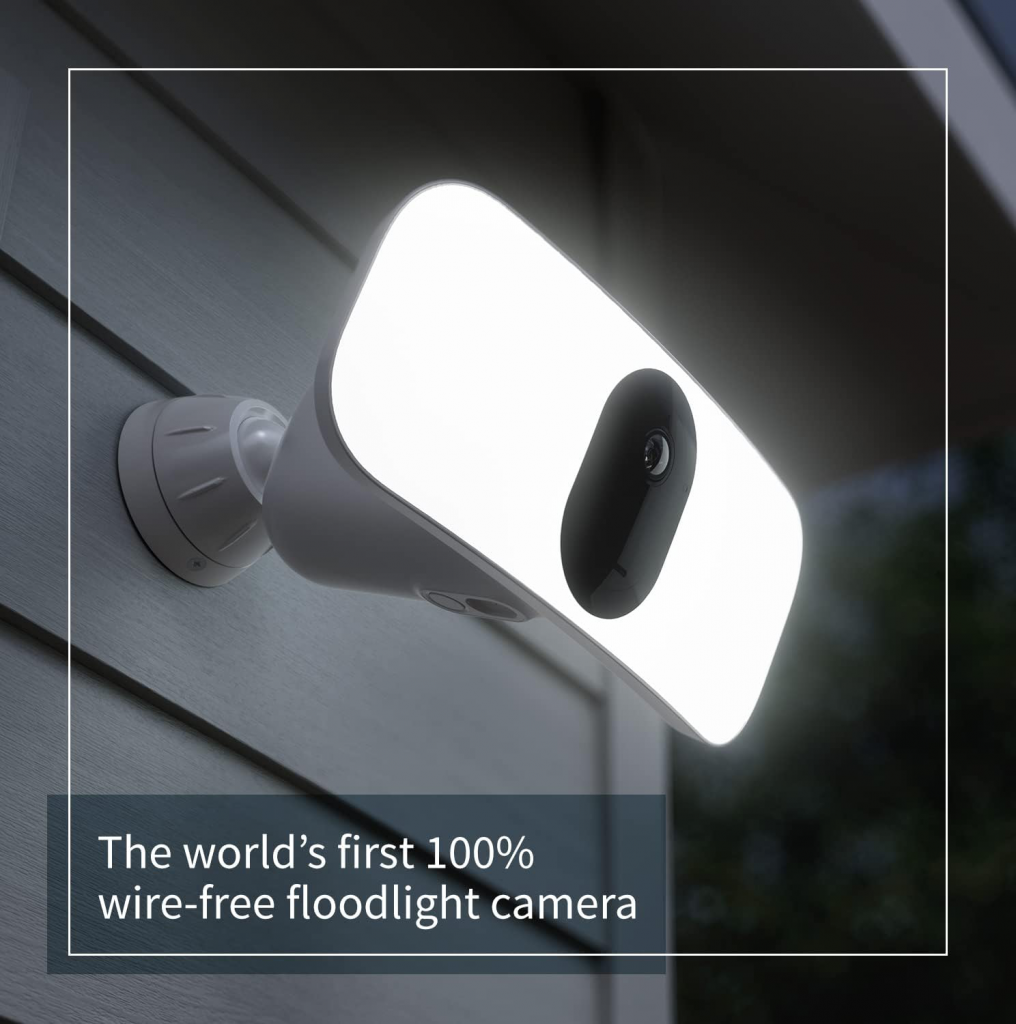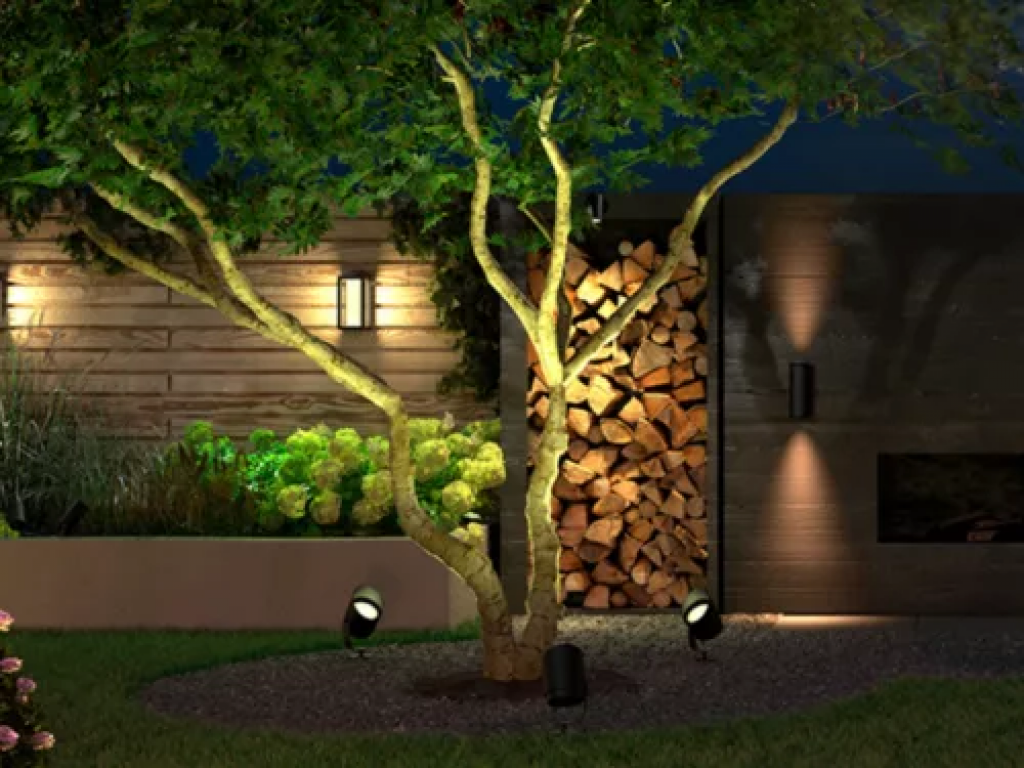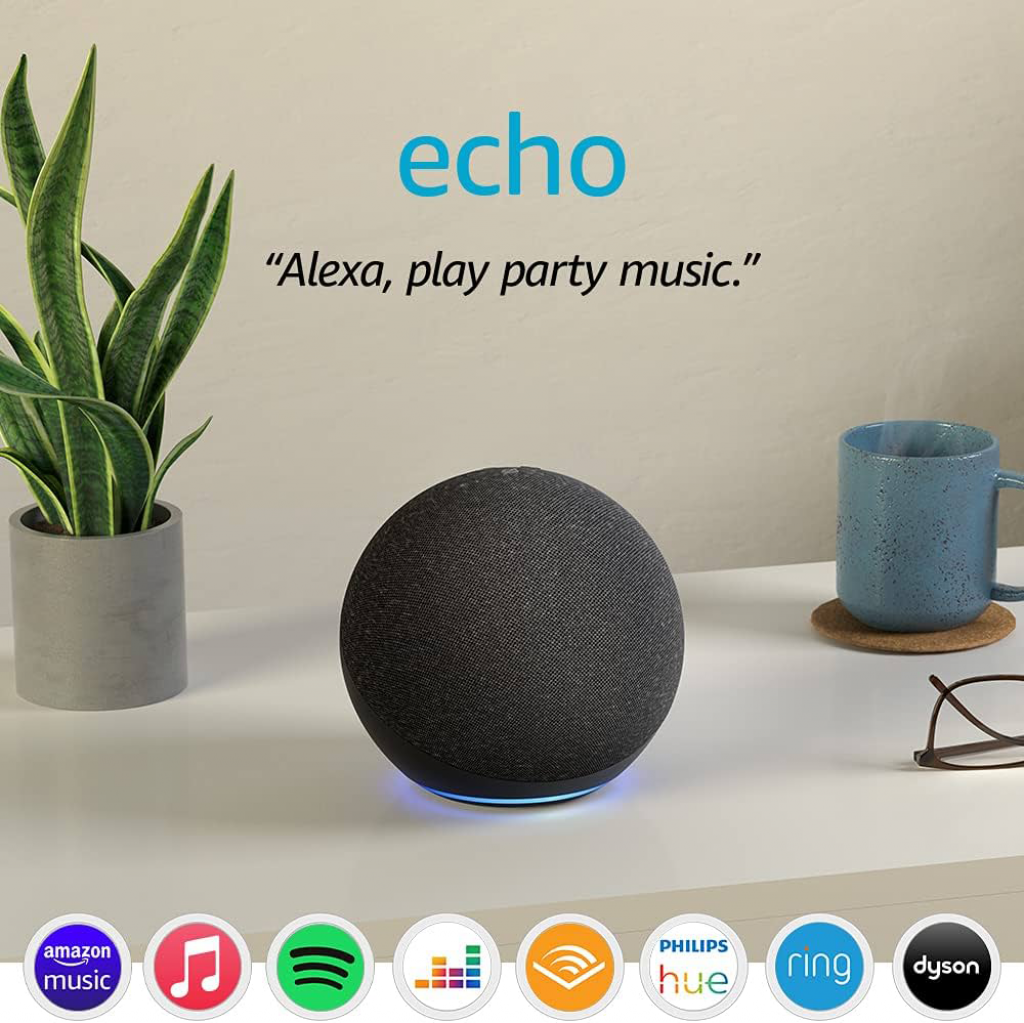Introduction
In the ever-evolving world of technology, the things we often take for granted are undergoing profound transformations. The very essence of how we perceive and interact with our environment is being redefined. One of the central fixtures in this rapid evolution is the lighting around us. From the simple fire torches of ancient civilizations to the electric bulbs of the 20th century, and now, to the connected, intelligent lighting systems of the 21st century, our quest for efficient and adaptive illumination has been relentless.
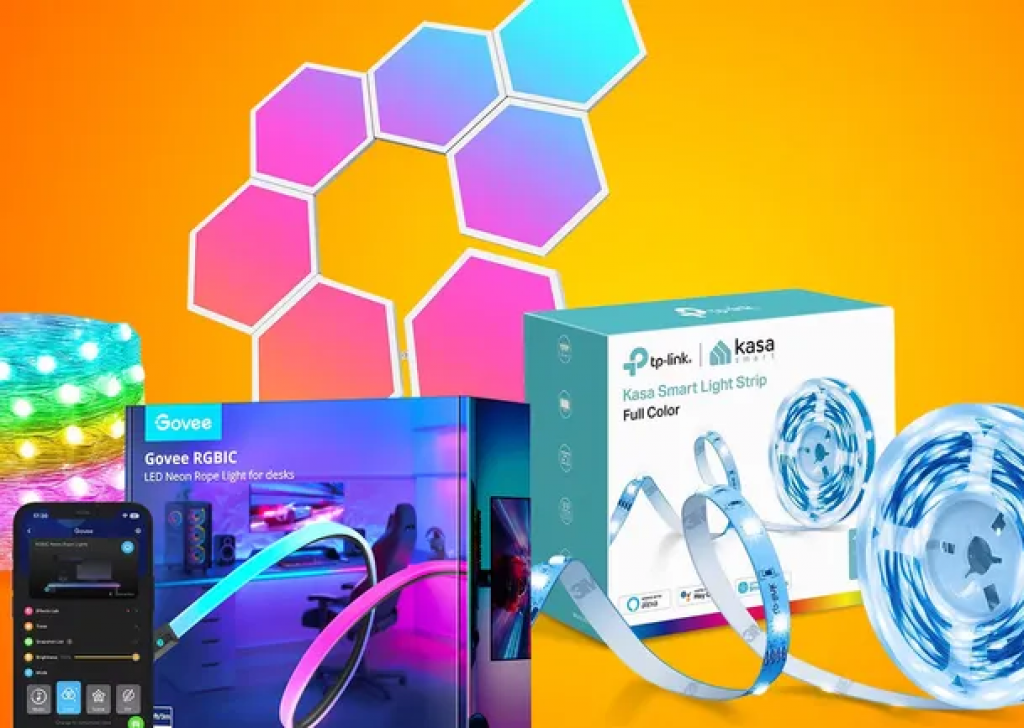
Enter the era of Smart Lighting and the Internet of Things (IoT). At its core, this is not merely about turning a light on or off using a smartphone. It’s a comprehensive ecosystem where our living spaces — homes, offices, parks, and cities — become sentient. They learn, adapt, and evolve based on our behaviors, preferences, and the environment.
Imagine this: you’re making your way back home after an exhausting day. As your car turns the corner, the driveway lights up, not too bright, but just right, gently guiding your path. Upon entering your home, the ambiance adjusts; soft, mellow hues flood the living room, while a gentle, melodious tune starts playing in the background. The temperature, having noticed the chill outside, has already made your home warm and cozy. This isn’t a scene out of a sci-fi movie. It’s today’s reality, made possible by the harmonious symphony of Smart Lighting and IoT.
This profound intersection of light and technology is reshaping not only our personal experiences but also has larger implications for energy consumption, urban planning, safety, health, and well-being. As we delve deeper into this topic, let’s embark on a journey to understand the magic behind these innovations, the transformations they’re ushering in, and the brighter, smarter future they promise.
The Convergence of Smart Lighting and IoT
When two technological revolutions cross paths, the outcome can be nothing short of transformative. And that’s precisely what happens when Smart Lighting meets the Internet of Things.
The Internet of Things: A Quick Primer
Before we delve deeper, let’s quickly understand the Internet of Things, or IoT. At its most basic, the IoT represents a vast network of interconnected devices that communicate, share data, and operate without constant human intervention. These devices can range from household appliances and vehicles to wearable tech and even entire city infrastructures. Now, integrate this intricate web of connectivity with lighting, and the possibilities are mind-boggling.
The New Age of Illumination
Traditional light sources had one primary function: illumination. You flicked a switch, and the room lit up. But the 21st century’s lighting systems are far from ‘traditional’. Today’s smart lights wear many hats. They’re not just sources of illumination but communication tools, mood enhancers, security devices, and energy-saving wonders.
For instance, consider a smart table lamp placed strategically in your study. Beyond its primary function, it can be programmed to adjust its brightness based on the time of day, perhaps dimming as the evening progresses to reduce strain on your eyes. But the real magic lies in its ability to connect to other devices. It can perhaps sync with your morning alarm, gradually brightening to simulate a sunrise and helping your body’s internal clock to adjust naturally.
Energy Efficiency and Environmental Considerations
With the increasing focus on sustainable living and the mounting concerns of energy consumption, the integration of smart lighting with IoT stands out as a beacon of hope. Lights can now be automated to operate only when needed, reducing energy wastage. For instance, motion sensors, like the Philips Hue Smart Motion Sensor, can detect when a room is occupied and adjust the lighting accordingly. This not only leads to significant energy savings but also contributes to a more sustainable future. Furthermore, when integrated with renewable energy sources, such as solar panels, the energy-saving potential is exponentially magnified.
The Safety and Security Angle
The enhanced capabilities of smart lighting also play a pivotal role in safety and security. Imagine, for example, outdoor floodlight cameras that can detect movement in your yard and instantly light up specific areas, capturing footage and potentially deterring intruders. Or streetlights in a smart city setup that brighten up when they detect pedestrians, ensuring safe passages on roads and walkways.
Implications for Home Living with Smart Lighting and IoT
The modern home isn’t just a shelter anymore. It’s a hub of technology, personal expression, and holistic living. As smart lighting merges seamlessly with IoT, households worldwide are experiencing a redefinition of what ‘home’ truly means.
Personalized Ambient Environments
Imagine returning home after a tiring day. Your home, equipped with devices like the Nanoleaf Canvas Starter Kit, senses your arrival and adjusts the lighting to a calming hue, maybe a gentle azure or a muted lavender. As you prepare dinner, the lights in your kitchen brighten, giving you clarity, while your living room maintains a cozy, subdued atmosphere.
But it’s not just about colors or brightness. By integrating with your favorite playlists or television shows, your lighting can sync up to elevate the entire experience. Watching a suspenseful thriller? Imagine the lights dimming slowly, ramping up the tension. Hosting a dance party? Let the lights dance along with you.
Enhanced Daily Routines and Productivity
Routine tasks can often be mundane, but smart lighting infused with IoT can transform even the most routine tasks. Take the simple act of reading. The IKEA TRÅDFRI LED Cabinet Light can adjust its brightness based on the ambient light and the time of day, ensuring you always have optimal illumination without straining your eyes.
For those working from home, imagine your home office’s lights adjusting based on your calendar. A video call with a client? The lights can enhance your video quality, ensuring you appear professional. Taking a break? Gentle mood lighting can help you relax for a few minutes, readying you for the next task.
Health Benefits and Circadian Alignment
There’s increasing evidence on the impact of light on our circadian rhythms. Adjusting light temperatures and brightness throughout the day can influence our body clocks. For instance, cooler, brighter lights during the early part of the day can stimulate alertness and productivity, while warmer hues in the evening can signal to our bodies that it’s time to wind down.
Incorporating smart lighting solutions like the Philips Hue Go Portable Smart Table Lamp can be a game-changer. Such devices often come with pre-set modes like “Concentrate” or “Relax”, optimizing lighting for various daily activities. By mimicking the natural progression of sunlight, from a crisp dawn to a golden dusk, these lights can support better sleep cycles and overall well-being.
A Voice-Controlled Household
And let’s not forget the magic of voice control. With platforms like Alexa, Google Assistant, or Siri integrated into the IoT ecosystem, controlling your smart lights becomes an experience straight out of a sci-fi novel. Need a romantic setting for a dinner date? Just ask, and your home transforms in seconds.
The Business Edge: Smart Lighting and IoT in Commercial Spaces
In today’s fast-paced business landscape, commercial spaces have evolved from being mere places of transaction to dynamic hubs of experience. Modern businesses are leveraging the combined prowess of smart lighting and IoT to create workspaces that are not just efficient, but also uniquely experiential.
Rethinking Workspace Design with Smart Lighting
Open-plan offices, co-working spaces, or hybrid environments; irrespective of the workspace design, smart lighting plays a pivotal role. Employing products like the Lutron Caseta Smart Dimmer Switch, businesses can craft micro-environments within a larger space. The marketing team might prefer a brightly lit space to keep the creative juices flowing, while the tech department might opt for adjustable, mood-based lighting. By catering to the individual needs of each department, businesses can enhance productivity and foster a positive work environment.
Energy Efficiency and Sustainability
As the world becomes more environmentally conscious, businesses are seeking ways to reduce their carbon footprint. Smart lighting, when paired with IoT, can provide actionable insights into energy consumption patterns. By understanding peak usage times, ambient light influences, and occupancy patterns, businesses can fine-tune their lighting systems to minimize waste. Products like the TP-Link Kasa Smart Wi-Fi Light Switch can automate this process, turning off lights in unused sections or adjusting brightness based on natural light availability.
Enhancing Customer Experience
Retail spaces, hotels, restaurants, and even theaters are harnessing the magic of smart lighting to enhance customer experiences. Imagine a retail store where the lighting changes based on the music, the time of day, or even the weather outside. Shopping becomes an immersive experience, with smart lighting guiding customers through the store, highlighting offers, or setting the mood. Hotels, on the other hand, can offer guests personalized room lighting based on their preferences, using products like the Philips Hue Adore Bathroom Mirror Light. This advanced light provides an ambiance that can morph according to guests’ moods, making their stay memorable and personalized. Such nuanced experiences create a lasting impression, turning a one-time visitor into a loyal customer.
Data-Driven Insights for Business Growth
Beyond creating ambiances, the data generated by interconnected smart lights can offer valuable business insights. By analyzing customer movements within a store, for example, businesses can identify hotspots, optimize product placements, or even redesign the store layout. In corporate environments, such data can inform managers about preferred work zones, aiding in better space management and team organization.
The Intersection of Smart Lighting and Security
Smart lighting isn’t merely about ambiance and aesthetics; it plays a pivotal role in home and office security. At its simplest, a well-lit home or workspace can deter potential intruders. But when combined with IoT, the possibilities stretch even further.
Enter products like the Arlo Pro 3 Outdoor Floodlight Camera. This isn’t just a floodlight. It’s a comprehensive security solution, combining the visibility provided by a bright light with the surveillance capabilities of a camera. Should it detect any movement, it doesn’t just illuminate the area; it also starts recording and sends an alert to the user.
Imagine you’re on vacation, and a delivery person drops a package off at your doorstep. With smart lighting solutions integrated with security systems, not only can you light up your entryway to deter potential package thieves, but you can also keep an eye on your front door from miles away.
Moreover, there’s the psychological element. Bright, sudden illumination can startle potential intruders, making them think twice about trespassing. By setting up routines and integrating with other smart home devices, lights can mimic presence, giving the illusion someone is home even when you’re away, using products like Philips Hue Smart Motion Sensor. It’s a two-fold strategy: while the actual security mechanisms like cameras or alarms work to capture or deter the intruder, the smart lights work on a psychological level to prevent the intrusion in the first place.
Data Collection and Analytics
In an era dominated by big data, smart lighting offers a unique avenue for data collection and analytics, all thanks to the interplay with IoT. Every time someone adjusts a smart light or sets a routine, it provides valuable data points. These adjustments, preferences, and routines are collected and can be analyzed to glean insights.
Consider the Lightwave LP21MK2 Smart Dimmer. As users set their preferred lighting levels for different activities, whether it’s dimmed ambiance for movie nights or a brighter setting for reading, these preferences can provide data on user behavior. Over time, an analysis of this data can offer predictions. For instance, if the system knows that the user typically dims the lights at 8 PM on Fridays, it can preemptively suggest or even automatically make that adjustment in the future.
This ability to anticipate and adjust isn’t just about user convenience. For businesses, these insights can be invaluable. Retailers can understand the lighting preferences of their customers better, adjusting store lighting based on the times of day or even specific customer behaviors. In office spaces, facility managers can optimize lighting for employee productivity and well-being.
Furthermore, in a broader urban context, city planners can use data from public smart lighting solutions to determine high-footfall areas, analyze patterns of activity in nighttime recreation zones, or even design safer pedestrian pathways. These applications provide a lens into how granular data from seemingly simple devices can feed into larger systems, creating smarter cities and more intuitive living spaces.
The importance of data security cannot be overstated here. With increased data collection comes the responsibility of ensuring this data is protected and used ethically. But when approached with caution and responsibility, the insights from smart lighting systems can be revolutionary.
Environmental Benefits and Energy Efficiency
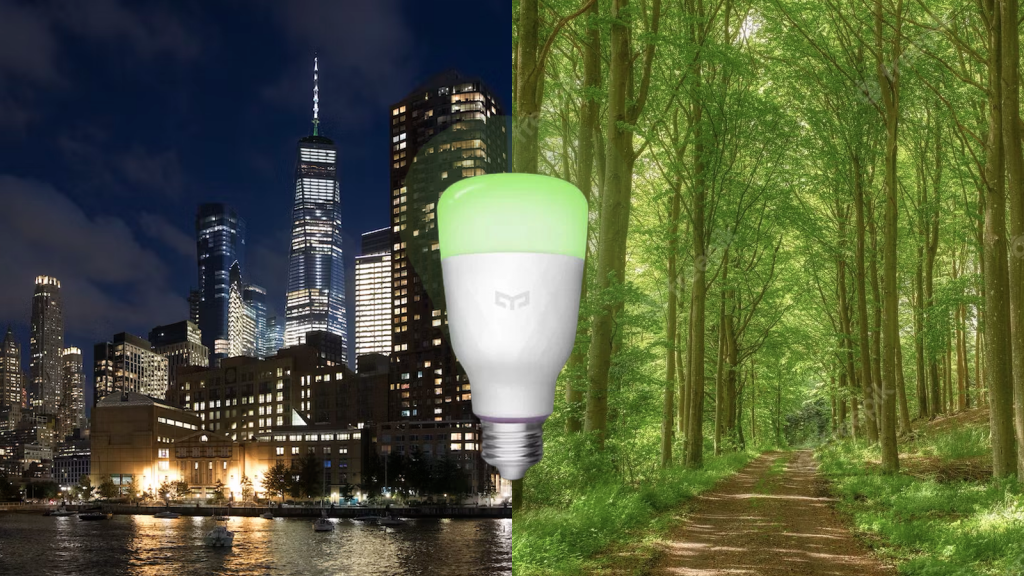
Smart bulb symbolizing the bridge between urban energy consumption and environmental conservation.
An Eco-Friendly Revolution in Lighting
As we stand at the threshold of a global climate crisis, the integration of smart lighting within the Internet of Things framework offers a beacon of hope. Smart lighting systems have long been celebrated for their environmental benefits. When coupled with the data-driven power of IoT, their potential to champion energy efficiency skyrockets.
Efficiency of Smart Bulbs
For instance, smart bulbs inherently use less energy than their traditional counterparts. According to industry research, some advanced models consume up to 75% less energy and last 25 times longer. But when these bulbs are enhanced with IoT capabilities, they can adapt to their environments seamlessly. Imagine a system where lights adjust their brightness based on the natural sunlight pouring into a room, ensuring no unnecessary energy is wasted. Or consider an outdoor lighting system that dims or brightens based on cloud cover or time of day.
Intelligent Outdoor Lighting Solutions
The Philips Hue Lily Outdoor Spotlights offer a taste of this future. Integrated sensors and advanced algorithms allow these lights to sync with sunrise and sunset, reducing energy wastage and ensuring an optimal lighting experience. Such innovations underscore the intersection of eco-friendliness and tech-savviness.
Data-Driven Insights for Consumption Patterns
Another leap forward is the ability to analyze and predict energy consumption patterns. With IoT, data from your lighting systems can be sent to centralized cloud platforms where advanced analytics can be run. For homeowners, this means detailed reports on which rooms or spaces consume the most energy, at what times, and why. Using this information, one can tweak their lighting habits, replace energy-guzzling fixtures, or simply be more mindful of their consumption.
Business Implications and Urban Landscapes
Businesses, especially large corporations with multiple offices worldwide, can achieve significant cost savings through smart lighting powered by IoT, leading to substantial yearly energy savings. This isn’t just good for the bottom line; it’s excellent PR. Being recognized as a green company in today’s environment can significantly bolster a brand’s reputation.
In the context of vast urban landscapes, city planners and municipal bodies can harness the combined power of smart lighting and IoT to create intelligent street lighting systems. Lights can be dimmed or brightened based on pedestrian and vehicular traffic, saving immense amounts of energy at a macro level.
Stepping Towards a Sustainable Future
The move toward a more sustainable future is inevitable. As technology continues to evolve, it’s imperative to adopt systems that benefit both the environment and consumers. In this race against time, smart lighting, with the backing of the IoT, emerges as a formidable ally.
Seamless Integration with Other Smart Home Devices
Smart Lighting: The Conductor of a Technological Orchestra
The captivating world of smart lighting becomes even more enthralling when integrated within the vast smart home ecosystem. In this age of the Internet of Things (IoT), various devices – from intriguing smart refrigerators to essential thermostats – seamlessly interact through a shared digital dialect, creating synchronized and harmonized operations. Here, smart lighting plays a pivotal role, orchestrating these inter-device collaborations and elevating the broader smart home experience.
Creating the Perfect Ambiance for Entertainment
Imagine a tranquil evening spent binge-watching your treasured series. As the episode begins, the curtains, powered by their intelligent mechanism, gently close. Meanwhile, the smart thermostat adjusts itself to create a snug ambiance. Just as the opening credits grace the screen, lights artistically dim or transition in color, curating the perfect atmosphere. While these individual actions might appear insignificant, when combined, they create a truly immersive experience. Devices like the TP-Link Tapo Smart LED Light Strip exemplify this harmony, casting ambient lighting in tune with on-screen dynamics.
Boosted Security through Smart Convergence
The realms of smart lighting and security are closely interlinked. When a security system identifies a discrepancy, it can swiftly relay this information to the smart lighting setup. This integrated approach could activate specific lights in the household to blink or change colors, potentially deterring unwanted visitors or at least signaling a potential issue.
Voice Assistants: Elevating the Smart Experience
Marrying smart lighting with voice assistants like Amazon Alexa or Google Assistant propels the user journey to new heights. Visualize this scenario: a gentle request to Alexa, and your living space metamorphoses into a tranquil haven for meditation. Alternatively, a casual directive to Google might prompt the Yeelight Smart LED Bulb to gradually dim in your child’s room, gently ushering them into dreamland.
Beyond Automation: An Intuitive Smart Home
However, the allure of the connected home extends beyond simple voice commands or programmed routines. Contemporary systems are designed to be insightful – they learn and adapt to users’ preferences and behaviors. For instance, should your fitness tracker register a restless night, it could seamlessly communicate with your smart lighting, illuminating a subtle trail should you decide to wander.
The Contemporary Smart Home Narrative
What was once confined to the pages of sci-fi literature is now our lived reality. Smart lighting emerges as a central character in this narrative, transforming mundane tasks into tailored, delightful experiences.
The Future of Smart Lighting and IoT
Advancements in Sensor Technology
Sensor technology lies at the core of the smart lighting revolution. As these sensors become more refined and responsive, they’ll be better equipped to detect and respond to nuanced environmental changes. Think of a future where your home’s lighting responds not just to the time of day, but to subtle atmospheric conditions like humidity or even the moods of the occupants. Advanced sensors might even be able to recognize individual residents and adjust lighting according to their personal preferences.
Integration with Augmented and Virtual Reality
The convergence of augmented reality (AR) and virtual reality (VR) with smart lighting promises transformative experiences. Imagine donning an AR headset at home and seeing your environment dynamically adjust its lighting based on the digital content you’re interacting with. Or, perhaps using VR to simulate different lighting scenarios for a room before committing to a particular ambiance. Such integrations will provide users with immersive experiences, blurring the lines between the digital and physical worlds.
Predictive and Proactive Adjustments
With the integration of Machine Learning (ML) and Artificial Intelligence (AI), smart lighting systems will soon be equipped to make predictive adjustments. This means they’ll learn from your daily routines and anticipate your lighting needs. If you regularly read a book at a certain hour, the lights will proactively adjust to provide optimal reading light. If you’re hosting a movie night every weekend, the system might suggest ambient lighting that elevates the cinematic experience.
Decentralized Decision Making
Future smart lighting systems will no longer rely solely on a centralized hub for decision-making. With the emergence of edge computing in IoT, individual light bulbs and fixtures will have the capability to process data and make decisions on the spot. This decentralization promises faster response times and a more resilient system overall.
Sustainability and Self-Powered Systems
Environmental consciousness will continue to shape the evolution of smart lighting. Innovations like the Nanoleaf panels, which harness solar energy during the day to power their illuminations at night, will become more commonplace. These self-powered systems will not only reduce energy consumption but also decrease our reliance on non-renewable sources of power.
In this rapidly evolving landscape, smart lighting systems, powered by IoT, are not just about illumination. They represent the future of home and urban environments, fostering comfort, efficiency, and sustainability. As technology and human needs converge, the possibilities are, quite fittingly, bright.
Challenges and Considerations in Smart Lighting
Privacy Concerns
In an age where data is gold, smart lighting systems, like other IoT devices, can become potential treasure troves of information about user habits and lifestyles. These devices, while incredibly beneficial, may inadvertently compromise user privacy if not designed and used judiciously. Manufacturers and consumers alike need to prioritize data encryption, secure networks, and clear privacy policies to ensure that personal information remains confidential.
Interoperability Issues
While the dream is a seamlessly interconnected smart home, the reality can sometimes be a jumble of incompatible devices and systems. Different brands might operate on different protocols, making inter-device communication challenging. Adopting universally accepted standards and fostering collaborations between companies can pave the way for smoother integrations.
Initial Setup and Learning Curve
The initial setup of smart lighting systems, especially in an interconnected IoT environment, can be daunting for non-tech-savvy users. To enhance user adoption rates, companies need to invest in user-friendly interfaces, comprehensive guides, and perhaps even offer installation services. Furthermore, ensuring intuitive controls and automations can minimize the learning curve for users.
Cost Implications
The upfront costs of transitioning to a smart lighting environment can be substantial, especially for comprehensive systems with numerous features. However, it’s essential to view this as an investment. Over time, the energy savings and enhanced durability of these systems can lead to significant financial benefits. Manufacturers can also explore scalable solutions, allowing users to start small and expand their smart lighting ecosystem as their budget permits.
Concluding Thoughts: Illuminating the Path Forward
As with all technological advancements, smart lighting, powered by the Internet of Things, comes with its share of challenges and rewards. It promises a future where our living spaces are not just places of residence but dynamic environments that adapt and evolve with our needs. They hold the potential to revolutionize not only how we perceive lighting but also how we interact with our surroundings.
However, it’s crucial for manufacturers, policymakers, and consumers to move forward with a balanced approach, considering both the immense benefits and the potential pitfalls. Through collaboration, innovation, and a keen focus on user needs, the future of smart lighting is poised to be as bright and sustainable as the solutions it offers.
